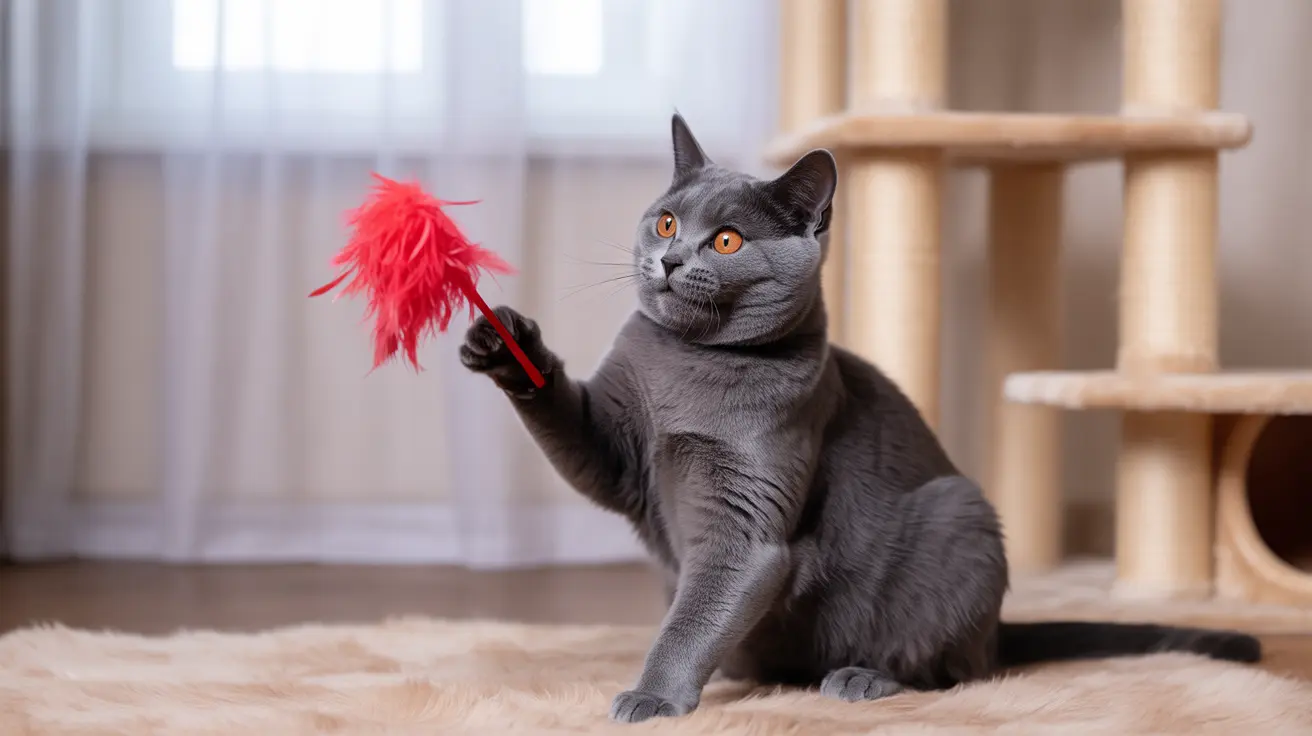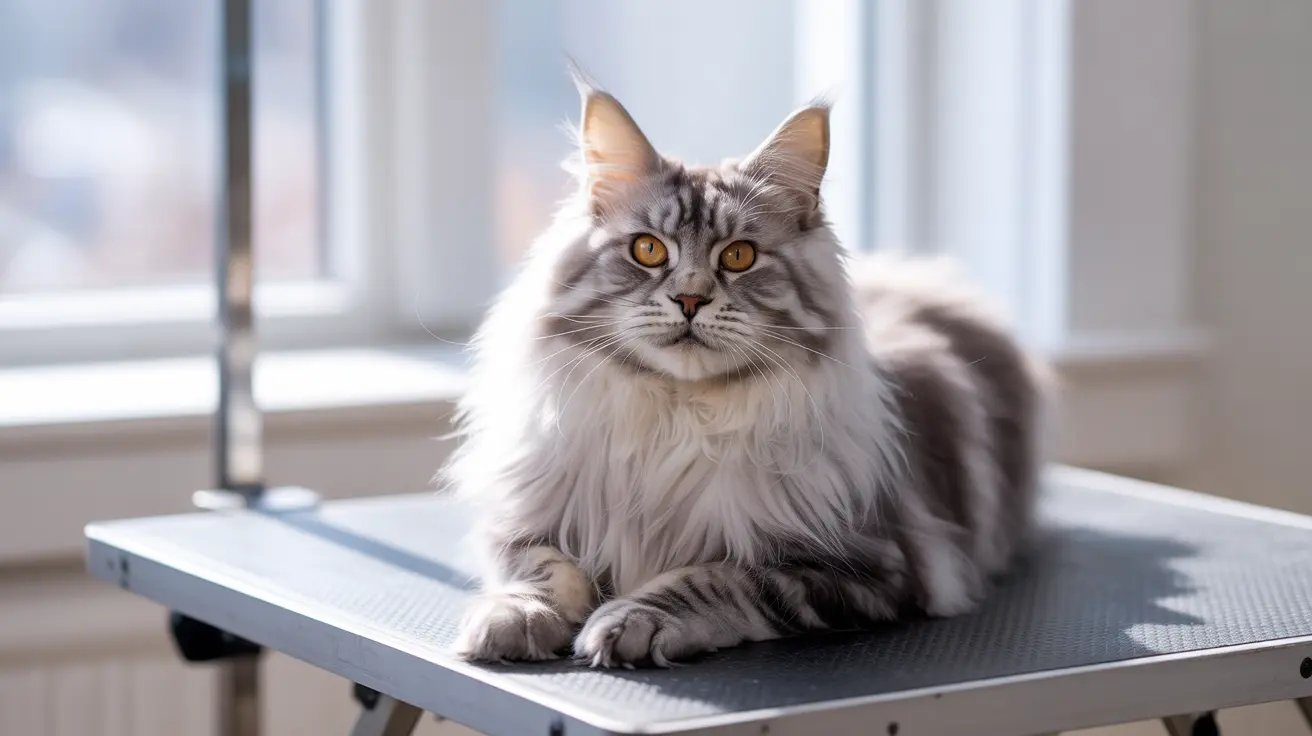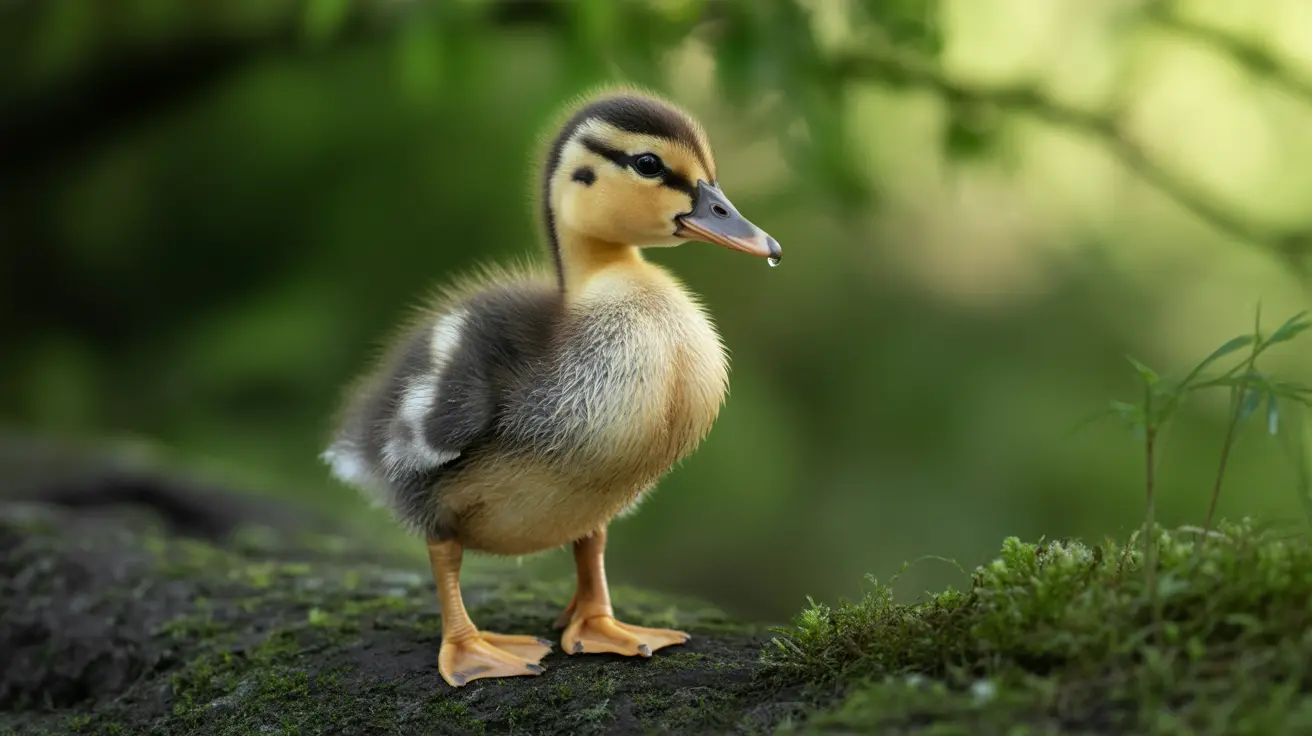Chartreux Cat Breed Profile: The Complete Guide to France's Blue-Gray Treasure
The Chartreux cat breed stands as one of France's most cherished feline treasures, captivating cat enthusiasts worldwide with its distinctive blue-gray coat and mesmerizing copper-orange eyes. This medium to large, heavily muscled breed combines the elegance of French heritage with the practical qualities of an exceptional hunter, making it a unique companion for discerning cat lovers.
Often mistaken for the British Shorthair due to their similar coloring, the Chartreux possesses its own distinct personality traits and physical characteristics that set it apart from other breeds. From its legendary origins in medieval France to its quiet, intelligent demeanor, this comprehensive Chartreux cat breed profile will explore everything prospective owners need to know about this remarkable feline companion, including its temperament, care requirements, health considerations, and the enrichment needs that help these cats thrive in modern homes.
Origins and Historical Background of the Chartreux
The Chartreux cat breed boasts a fascinating history that spans several centuries, with its first documented mention appearing in 1558 in a French poem by Joachim du Bellay, who mourned the death of a small gray cat believed to be of this breed. The breed gained further recognition when it appeared in a 1747 portrait by Jean-Baptiste Perronneau, cementing its place in French cultural history.
Two compelling legends surround the breed's origins. The first suggests that Carthusian monks brought the ancestors of Chartreux cats to France, where they lived in the Grande Chartreuse monastery located in the Chartreuse Mountains near Grenoble. However, monastery archives contain no records confirming this romantic tale. The more historically supported theory proposes that the breed descends from feral mountain cats from what is now Syria, brought to France by returning Crusaders in the 13th century.
The breed faced significant challenges during the 20th century, with populations declining sharply during World War I and nearly reaching extinction after World War II. Only the dedicated efforts of the Léger sisters in Belle-Île-en-Mer may have preserved some bloodlines, allowing European breeders to later revive the breed through careful breeding programs.
The Chartreux in America
The Chartreux made its American debut in 1971 when Helen and John Gamon imported the first cats from France. The Cat Fanciers' Association (CFA) recognized the breed as a championship breed in 1987, though it remains relatively rare in the United States. As of 2007, fewer than two dozen active Chartreux breeders operate in North America, with many breeding programs exporting cats back to France, further limiting availability for American cat enthusiasts.
Physical Characteristics and Appearance
The Chartreux presents a striking appearance with its robust, heavily muscled body structure and distinctive blue-gray coat. This medium to large breed features heavy bone structure and a thick, rounded appearance, with males typically being larger than females. The breed's powerful build reflects its historical role as an exceptional hunter, highly prized by French farmers for its pest control abilities.
The most distinctive feature of the Chartreux is its coat, which ranges from ash to slate blue-gray with often a silvery sheen. The medium-short coat feels slightly woolly in texture, remaining resilient, dense, and notably water-repellent. This unique coat texture, combined with its longer topcoat, distinguishes the Chartreux from similar breeds like the British Shorthair.
Perhaps the most captivating aspect of the Chartreux's appearance is its eyes, which are rounded and open with colors ranging from copper to bright orange. These luminous eyes, combined with the cat's rounded face, powerful jaws, and full cheeks, often create the appearance of a subtle "smile" due to the structure of their heads and tapered muzzles.
Distinguishing Features from Similar Breeds
While the Chartreux may appear similar to the British Blue, several key differences distinguish these breeds. The Chartreux possesses finer bone structure in their legs compared to the British Blue and maintains exclusively bright orange eyes, whereas British Blue cats can have various eye colors including green, blue, and copper. Additionally, the Chartreux's coat texture remains distinctly woolly and water-repellent, contrasting with the British Blue's plush, dense coat.
Temperament and Personality Traits
The Chartreux cat breed profile reveals a remarkably calm and intelligent companion with unique personality traits that endear them to cat enthusiasts worldwide. These cats are renowned for their quiet nature, with many individuals rarely vocalizing and some being completely mute. When they do communicate, Chartreux cats prefer subtle methods such as murmurs, chirps, body language, and gentle paw touches rather than loud vocalizations.
Despite their reserved vocal nature, Chartreux cats are highly observant and intelligent, remaining playful well into adulthood. Many can be taught to fetch small objects, showcasing their trainable nature and desire to interact with their human companions. This breed demonstrates exceptional adaptability, adjusting well to different living environments and even traveling comfortably when necessary.
The Chartreux tends to form a particularly strong bond with one person in the household while remaining affectionate and loving to all family members. They are non-aggressive, good with children and other animals, making them excellent family pets. Their friendly and sociable nature, combined with their affectionate demeanor, creates a perfect balance of independence and companionship.
Social Behavior and Interaction
These cats excel in multi-pet households, demonstrating their non-aggressive nature and ability to coexist peacefully with other animals. Their calm temperament and intelligence make them particularly suitable for families with children, as they rarely display aggressive behaviors and tend to be patient and gentle in their interactions.
Care Requirements and Grooming Needs
The Chartreux cat breed profile indicates relatively low-maintenance care requirements, making them suitable for both experienced and novice cat owners. Their medium-short, water-repellent coat requires moderate grooming, including weekly combing to remove dead hair and check for any skin issues. During spring shedding season, more frequent grooming becomes necessary to manage increased hair loss.
Regular veterinary care remains essential for maintaining the health of Chartreux cats, including routine vaccinations, parasite control, and annual health examinations. Diet management becomes particularly important for mature individuals, as excessive weight gain can be problematic for some cats in this breed.
The breed benefits significantly from moderate exercise, engaging toys, and mental stimulation to maintain their physical and psychological well-being. Chartreux cats enjoy playing hunting games and participating in interactive play sessions that challenge their intelligence and satisfy their natural hunting instincts.
Indoor vs. Outdoor Living Considerations
While Chartreux cats are capable hunters and can thrive with outdoor access, modern individuals can successfully adapt to indoor living when provided with adequate environmental enrichment. Indoor cats should have access to secure outdoor spaces such as enclosed patios or cat runs, or alternatively, comprehensive indoor enrichment including climbing structures, interactive toys, and scratching posts.
Creating an Optimal Indoor Environment for Chartreux Cats
For Chartreux cats living indoors, environmental enrichment becomes crucial for their mental and physical well-being. These intelligent, formerly hunting cats require stimulation that mimics their natural behaviors and provides adequate exercise opportunities. A well-designed indoor environment should include multiple levels of climbing structures, as Chartreux cats appreciate vertical spaces for observation and exercise.
Interactive toys that stimulate hunting behaviors work particularly well for this breed, including puzzle feeders, motorized toys, and feather wands that encourage jumping and pouncing. Rotating toys regularly prevents boredom and maintains interest in play activities. Window perches positioned to observe outdoor activity provide mental stimulation and entertainment for indoor Chartreux cats.
Working owners should particularly consider adopting a second cat to prevent loneliness, as Chartreux cats, while independent, still benefit from companionship during long periods alone. The breed's sociable nature and compatibility with other animals make them excellent candidates for multi-cat households.
Health Considerations and Common Issues
The Chartreux cat breed profile reveals generally excellent health with few breed-specific issues, contributing to their reputation as hardy, long-lived companions. However, responsible ownership requires awareness of potential health concerns that may affect some individuals within the breed.
Polycystic kidney disease represents one potential hereditary condition that can affect Chartreux cats, though it remains relatively uncommon. Struvite crystals causing urinary problems may also occur in some individuals, making proper hydration and appropriate diet particularly important for this breed.
Luxating patella, or slipped kneecap, represents another condition that responsible breeders screen for in their breeding programs. Reputable breeders avoid breeding cats with patellar luxation to prevent passing this condition to offspring.
Preventive Health Measures
Regular veterinary checkups, maintaining appropriate body weight, and providing proper nutrition form the foundation of preventive health care for Chartreux cats. Their robust constitution and generally healthy genetics contribute to their reputation as low-maintenance companions when basic health needs are met consistently.
Training and Behavioral Development
The intelligent nature of Chartreux cats makes them surprisingly trainable, with many individuals capable of learning complex behaviors beyond basic litter box usage. Their ability to learn fetching behaviors showcases their cognitive abilities and willingness to engage in interactive play with their human companions.
Training sessions work best when kept short and positive, utilizing their natural intelligence and desire to please their primary bonded person. Clicker training can be particularly effective with Chartreux cats, as they respond well to consistent, positive reinforcement methods.
Early socialization remains important for developing well-rounded adult cats, though the breed's naturally calm and friendly temperament makes this process typically straightforward. Exposing young Chartreux cats to various experiences, people, and situations helps ensure they develop into confident, adaptable adult companions.
Nutrition and Diet Recommendations
The Chartreux cat breed profile indicates moderate dietary requirements that align with their medium to large size and muscular build. High-quality protein should form the foundation of their diet to support their robust muscle structure and maintain their naturally athletic physique.
Portion control becomes particularly important for mature Chartreux cats, as the breed can be prone to weight gain in later years. Dividing daily food portions into multiple smaller meals helps prevent overeating and supports healthy digestion.
Fresh water availability remains crucial for this breed, particularly given their potential susceptibility to urinary issues. Some owners find that water fountains or multiple water stations throughout the home encourage increased water consumption, supporting kidney and urinary tract health.
Integration into Multi-Pet Households
The Chartreux's non-aggressive nature and sociable temperament make them excellent candidates for multi-pet households. Their calm demeanor and intelligence allow them to assess new situations carefully before reacting, reducing the likelihood of conflicts with existing pets.
When introducing a Chartreux to a household with existing pets, gradual introduction methods work best, allowing all animals to become accustomed to each other's presence slowly. The breed's tendency to bond strongly with one person while remaining affectionate to all family members extends to their relationships with other pets, often forming close companionships with other cats or even dogs.
Their historical role as working cats alongside humans translates well to modern multi-pet dynamics, where they often assume a calm, observant role within the household pet hierarchy without displaying dominance issues or territorial aggression.
Frequently Asked Questions
- How rare is the Chartreux cat breed?
The Chartreux remains quite rare, particularly in the United States, with fewer than two dozen active breeders in North America as of 2007. Many breeding programs export cats back to France, further limiting availability for American cat enthusiasts.
- Do Chartreux cats make good apartment pets?
Yes, Chartreux cats can adapt well to apartment living when provided with adequate environmental enrichment, including climbing structures, interactive toys, and mental stimulation. Their calm nature and moderate exercise needs make them suitable for smaller living spaces.
- Are Chartreux cats vocal like Siamese cats?
No, Chartreux cats are known for being quiet and rarely vocalize, with some individuals being completely mute. They prefer to communicate through subtle methods like murmurs, chirps, body language, and gentle paw touches rather than loud vocalizations.
- What's the difference between a Chartreux and a British Shorthair?
While similar in appearance, Chartreux cats have a woolly, water-repellent coat texture and exclusively bright orange eyes, whereas British Shorthairs have a plush, dense coat and can have various eye colors. Chartreux also have finer bone structure in their legs compared to British Shorthairs.
- How much grooming do Chartreux cats require?
Chartreux cats require moderate grooming, including weekly combing to remove dead hair and check for skin issues. During spring shedding season, more frequent grooming is necessary, but overall they are relatively low-maintenance compared to long-haired breeds.
- Can Chartreux cats learn tricks?
Yes, many Chartreux cats are intelligent enough to learn tricks, including fetching small objects. Their trainable nature and desire to interact with their human companions make them responsive to positive reinforcement training methods.
- Do Chartreux cats get along with children and other pets?
Chartreux cats are excellent with children and other animals due to their non-aggressive, calm temperament. They tend to be patient and gentle in their interactions, making them suitable family pets in households with multiple pets or children.
Conclusion
The Chartreux cat breed profile reveals a truly exceptional feline companion that combines the elegance of French heritage with practical qualities that make them ideal pets for many households. Their distinctive blue-gray coat, bright orange eyes, and calm, intelligent temperament create a unique combination that has captivated cat enthusiasts for centuries. While their rarity, particularly in the United States, may make finding a purebred Chartreux challenging, those fortunate enough to share their homes with these remarkable cats discover a loyal, affectionate companion that adapts well to various living situations.
From their fascinating historical origins to their modern role as cherished family pets, Chartreux cats demonstrate the perfect balance of independence and companionship. Their minimal grooming requirements, generally excellent health, and ability to thrive in both indoor and outdoor environments make them suitable for a wide range of cat owners. Whether you're drawn to their striking appearance, their quiet and gentle nature, or their reputation as intelligent and trainable companions, the Chartreux cat breed offers a truly rewarding pet ownership experience for those ready to welcome France's blue-gray treasure into their hearts and homes.






